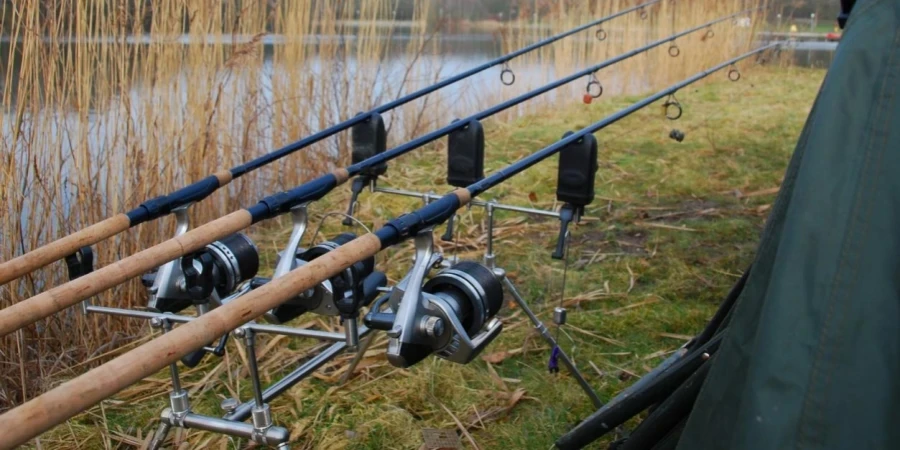Table of Contents
● Introduction
● Types of fishing rod racks and their uses
● Fishing rod rack market overview
● Key factors to consider when choosing a fishing rod rack
● Leading fishing rod racks and their standout features
● Conclusion
Introduction
Fishing rod racks are essential storage solutions that keep fishing rods organized, protected, and easily accessible. These products help to maximize space in storage areas, whether on a boat, in a garage, or at a dedicated fishing facility. With advancements in design and materials, modern rod racks are not only functional but also durable and versatile, catering to the varied needs of anglers and organizations alike. A well-chosen fishing rod rack ensures that rods are stored securely, preventing damage and tangling while offering easy access when needed. As the fishing industry continues to grow, selecting high-quality racks that combine strength, convenience, and adaptability is more important than ever.
Types of fishing rod racks and their uses
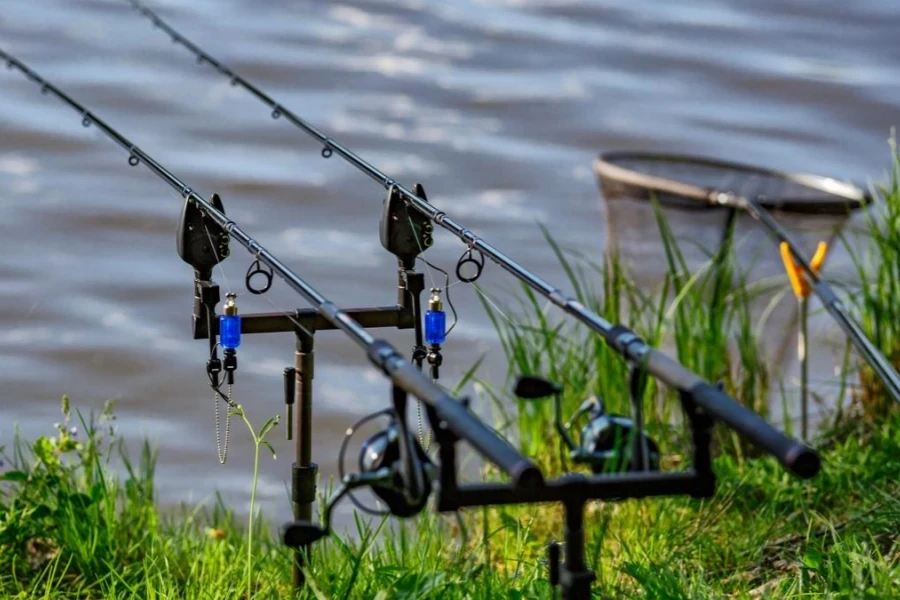
Wall-mounted Fishing Rod Racks: Space-saving and Accessible
Wall-mounted fishing rod racks are an excellent choice for those looking to save space while keeping their rods easily accessible. These racks are designed to be mounted on vertical surfaces such as walls, freeing up valuable floor space in smaller storage areas. They are typically compact, allowing for the efficient organization of multiple rods in a tight space. Some models feature adjustable arms or cradles, which makes it easier to store rods of different lengths. This style of rack is ideal for home storage or garages, providing both visibility and easy access for avid anglers. By using these racks, rods can be neatly arranged, helping to prevent damage from tangling or bending while maintaining an organized setup.
Freestanding Rod Holders: Ideal for Versatility and Multiple Rods
Freestanding rod holders are perfect for those who need a portable and versatile option for storing fishing rods. These racks usually feature a sturdy base and can accommodate multiple rods at once, making them an excellent solution for anglers with a large collection. Freestanding models are often used in boats, garages, or even outdoor settings where space allows. They provide flexibility by being movable, so they can be repositioned as needed. Moreover, many of these holders come with additional features like trays for accessories or cup holders, making them a practical choice for fishing expeditions. Their ability to hold rods securely while maintaining easy access adds a layer of convenience for those looking to store rods at a moment’s notice.
Boat-specific Rod Racks: Designed for On-the-water Use
Boat-specific fishing rod racks are designed to keep rods secure and accessible during water-based fishing activities. These racks are often made from marine-grade materials like stainless steel or plastic, ensuring that they can withstand the harsh conditions of saltwater and exposure to the elements. They are typically installed directly onto the boat, allowing for easy storage of rods without taking up unnecessary space. Boat-specific racks usually include features like adjustable angles and swivel capabilities, ensuring rods stay secure even in choppy waters. Whether fishing from a small kayak or a large charter boat, these racks are essential for keeping rods organized, safe, and ready for action during a day on the water.
Specialized Rod Holders: For Anglers with Unique Needs
Specialized rod holders cater to anglers with specific requirements or unique fishing techniques. These holders are designed for niche uses such as fly fishing, ice fishing, or long-distance casting. For example, fly fishing rod holders are often designed with extra padding or positioning features to prevent delicate rods from being damaged. Similarly, ice fishing rod racks are designed to be sturdy and able to withstand freezing temperatures while keeping rods secure. These specialized models may include features like extendable arms or high adjustability to accommodate varying fishing conditions. Such racks offer enhanced functionality and ensure that anglers’ rods are kept in top condition, ready for their unique fishing challenges.
Fishing rod rack market overview
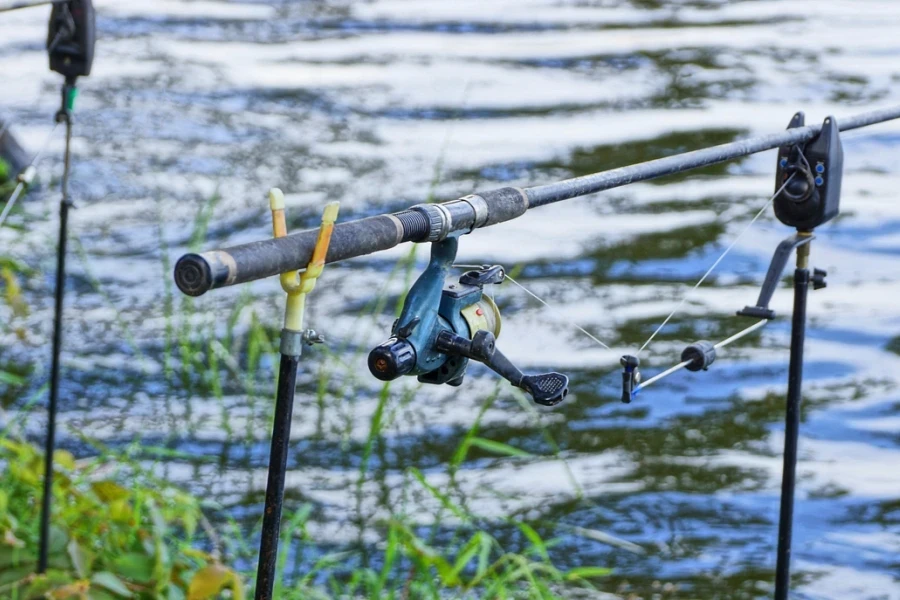
The global fishing rod racks market was valued at approximately US$ 1.02 billion in 2023 and is expected to grow at a compound annual growth rate (CAGR) of 7.5%, reaching US$ 1.88 billion by 2030. This growth is driven by the increasing demand for space-efficient and multifunctional rod storage solutions, as well as innovations in materials and design that cater to the evolving needs of anglers. These trends highlight a shift towards more versatile, durable, and user-friendly products, responding to both recreational and professional fishing demands, according to QY Research, Business Research Insights, and Verified Market Reports.
Recent Trends in Fishing Rod Rack Development
The fishing rod rack market is evolving, with recent trends focusing on durability and multi-functional designs. Manufacturers are increasingly innovating with materials that offer enhanced resistance to the elements, especially in coastal and freshwater environments. Products are now designed to meet the diverse needs of anglers, with customizations for specific types of fishing setups and storage preferences. Technology has also played a key role, as some racks are now being integrated with features like adjustable angles, integrated reel holders, and even space for accessories like hooks or line cutters. This focus on practical functionality, alongside sleek, modern designs, has made rod racks not just storage tools but essential components of any serious angler’s gear setup.
The Growing Demand for Multi-functional Rod Holders in 2025
As we move into 2025, the demand for multi-functional rod holders continues to rise, driven by a shift toward more versatile, space-saving solutions. These innovative designs allow anglers to store multiple rods, tackle, and accessories in a single, compact unit, offering increased convenience and efficiency. Particularly for those involved in boat fishing or in crowded fishing spots, multi-functional racks enable anglers to organize their gear while maximizing available space. Additionally, racks with modular components that can be adjusted or expanded to fit different rod types and angling setups are becoming more popular. This demand reflects the industry’s broader trend toward products that combine functionality, versatility, and compactness for a seamless fishing experience.
Key factors to consider when choosing a fishing rod rack
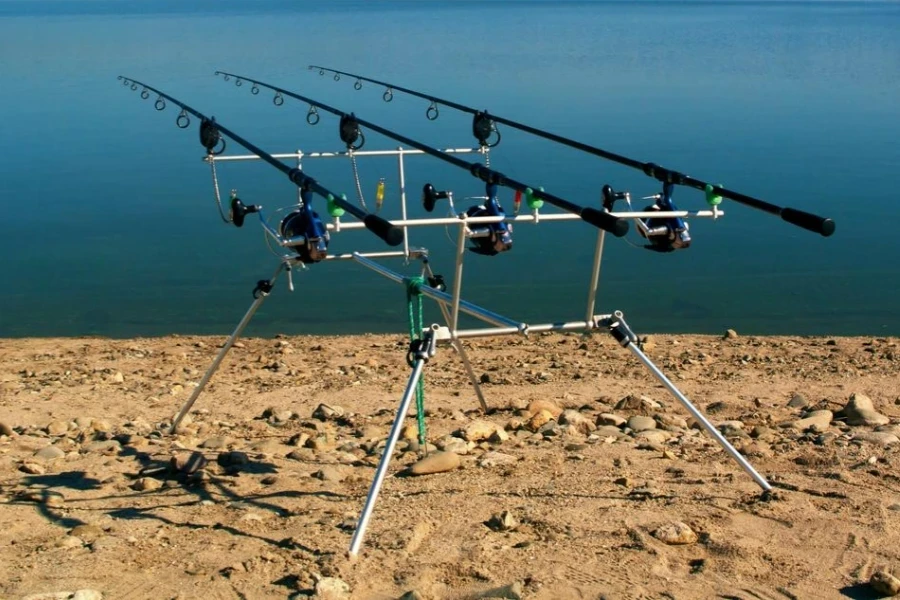
Material Quality: Rust-resistant, Durable, and Weatherproof Options
The material quality of a fishing rod rack is crucial for ensuring longevity and resistance against harsh conditions. Rod racks exposed to outdoor environments must be made from rust-resistant materials like stainless steel, aluminum, or high-quality plastic. These materials not only resist rust but also endure moisture, salt, and UV exposure. Weatherproof coatings or treatments, such as powder coating, are increasingly popular for improving durability. High-strength composites are also favored for their balance of weight and durability, especially for marine-based racks.
Storage Capacity: Tailoring to Different Fishing Needs
Fishing rod racks vary greatly in their storage capacity, which can be a deciding factor for users with different fishing needs. Racks designed to store just a few rods might appeal to casual anglers, while those with larger storage capacities are better suited for professionals or enthusiasts with extensive gear. Multi-tiered racks are often favored for maximizing storage space, while specialized designs such as vertical or horizontal rod holders are chosen based on the layout and space available in storage areas like garages or boats.
Ease of Use and Installation: Simple Yet Effective Solutions
Ease of use and installation are key considerations for fishing rod racks. Racks that require minimal assembly or installation time offer convenience, especially for busy users who prioritize functionality. Wall-mounted options are particularly popular because they can be easily installed with basic tools, saving space while providing secure storage. Freestanding racks or those designed for boat use often feature straightforward assembly instructions and user-friendly designs that facilitate quick set-up and rod access, making them more appealing for professional use.
Adjustability and Versatility: Ideal Features for Flexibility in Use
Adjustability is an increasingly important feature in fishing rod racks. Users prefer racks that can accommodate a variety of rod types, including long, short, heavy, and lightweight rods. Many modern rod racks feature adjustable arms or slots that allow for a customizable fit. Additionally, versatile designs that cater to different storage environments, such as those that can be mounted on walls, ceilings, or fit into boat spaces, provide flexibility for users with varying storage needs. These features ensure that anglers can keep their gear organized while also being able to easily adapt their storage solutions as their rod collection grows.
These factors are critical for ensuring that fishing rod racks not only meet basic storage needs but also align with the increasing demand for durable, versatile, and easy-to-use solutions.
Leading fishing rod racks and their standout features
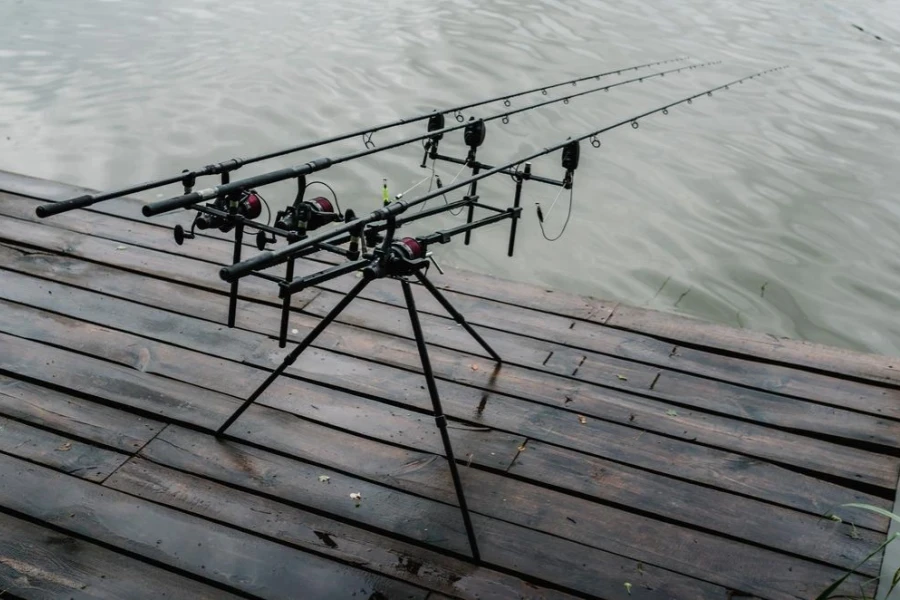
Top Wall-mounted Rod Racks for 2025: Compact, Efficient Storage
Wall-mounted rod racks are ideal for anglers who need a space-efficient, organized storage solution. These racks make use of vertical space, keeping rods off the floor and ensuring easy access. For 2025, the top models are designed for durability, featuring materials like weather-resistant plastics and heavy-duty steel to ensure long-lasting performance. Many wall-mounted racks also come with integrated storage options for reels and accessories, allowing for a more organized setup. Adjustable fittings make these models versatile, accommodating a range of rod sizes while remaining compact enough for both home and boat use.
Best Freestanding Models: Ideal for Maximum Storage and Flexibility
Freestanding fishing rod racks are popular for those who need maximum flexibility and easy portability. These racks allow anglers to move their rods around, whether for storage in a garage or on a boat, and can often hold multiple rods at once with adjustable tiers. Freestanding models are designed with stability in mind, often incorporating weighted bases or anti-tip features to ensure safety. These racks are also easy to use, offering quick access to rods, which is particularly useful when fishing in different environments. For those in need of storage solutions for a variety of rods and accessories, these models provide both convenience and adaptability.
High-end Boat Rod Holders: Premium Quality for Serious Anglers
Premium boat rod holders are essential for serious anglers who fish in challenging conditions. Made from marine-grade materials like anodized aluminum, these holders resist corrosion from saltwater, ensuring longevity and reliability. High-end models offer customizable features, such as adjustable angles and quick-release systems, allowing anglers to secure rods safely and access them with ease. These holders are often built directly into boat railings or custom decks, maximizing space and offering a sleek, clutter-free storage solution. Their durability and secure design make them ideal for rough seas, ensuring rods stay in place while fishing.
Features to Look for: Integrated Storage, Easy Adjustments, and More
When selecting the best fishing rod rack, essential features such as integrated storage and ease of adjustment are critical. Integrated storage compartments allow anglers to keep reels, tackle, and other fishing gear together, reducing clutter and improving efficiency. Adjustability is another key factor, as it allows the rack to accommodate different rod lengths and configurations, ensuring versatility. Whether wall-mounted or freestanding, racks that offer easy installation and durability are also highly sought after. These features ensure that the rack meets the practical needs of professional anglers, providing both convenience and functionality for varied environments.
Conclusion
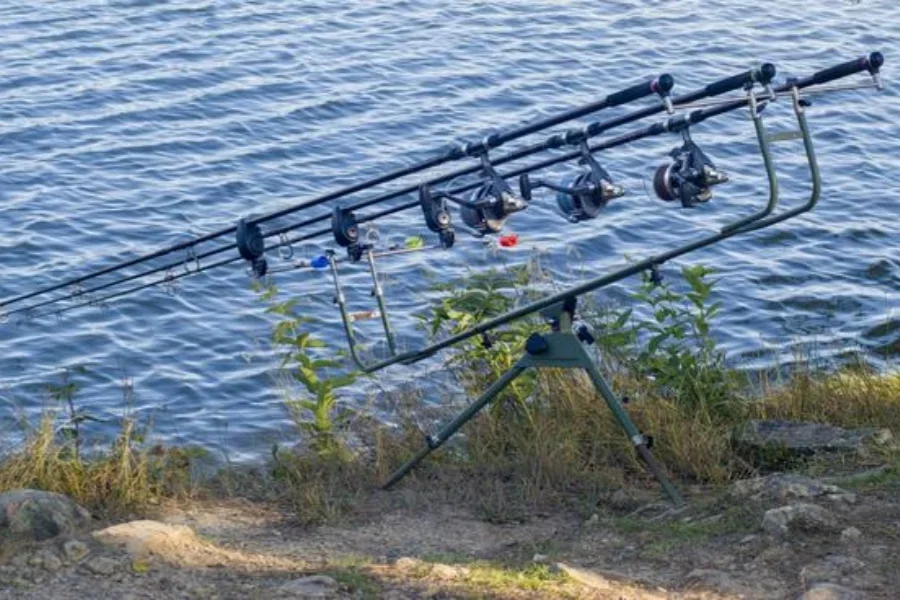
As the demand for fishing rod racks continues to grow, it’s essential for businesses to prioritize quality, durability, and design to meet the expectations of both consumers and retail standards. When selecting the best storage solutions for 2025, understanding material trends, such as the increasing preference for eco-friendly options, will be crucial. Additionally, factors like versatility, ease of use, and capacity should be top considerations for ensuring a long-lasting and valuable investment. Retailers can maximize their potential by aligning product offerings with evolving consumer needs, setting the foundation for strong future sales and brand loyalty.
